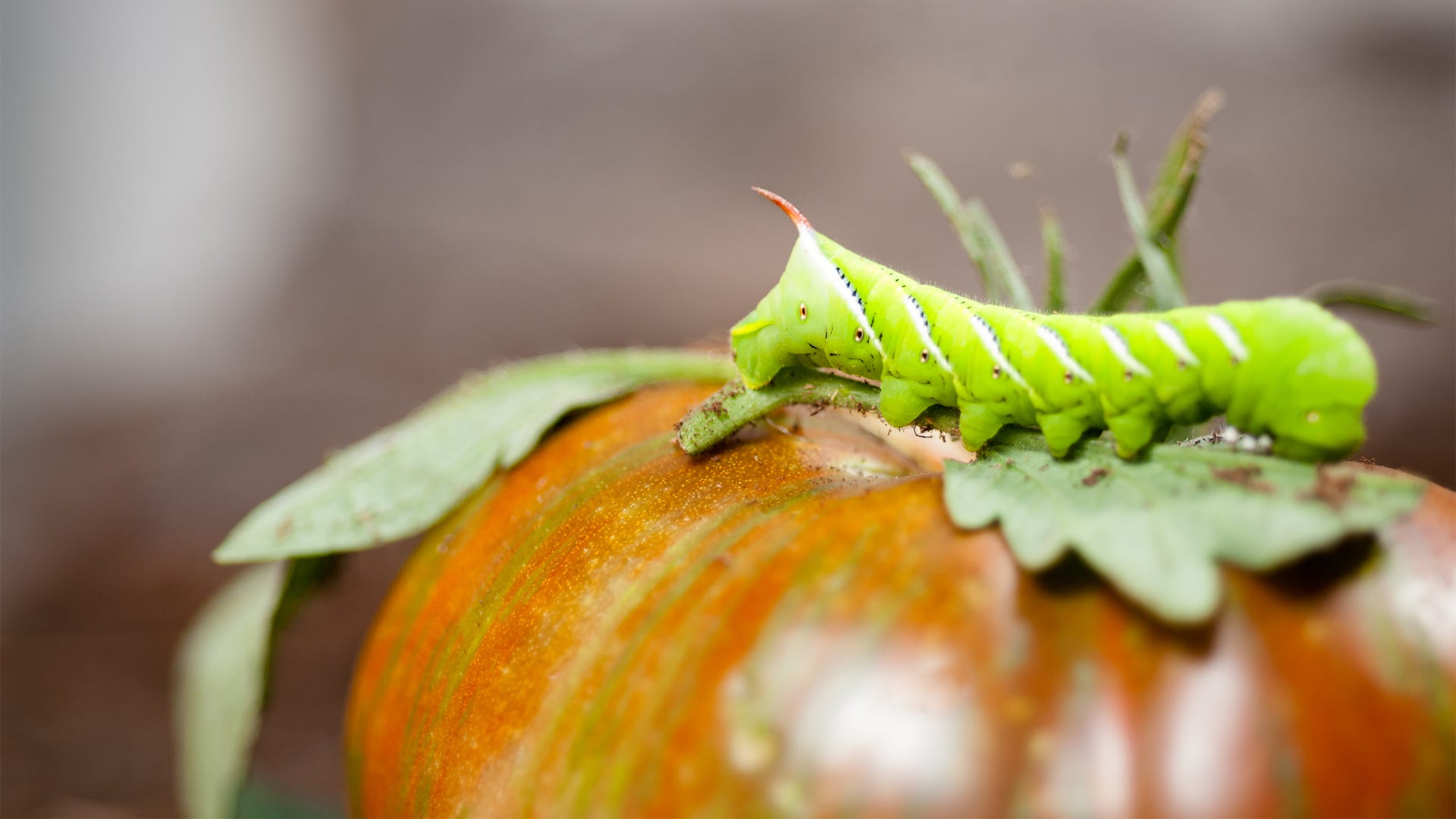
In addition to diseases, insects can also damage tomato plants. Not all bugs are bad — some insects are extremely helpful, and some will even attack the “bad” bugs plaguing your tomato plants. But there are a few harmful insects you should definitely be on the lookout for when growing tomatoes in your garden.
Although the list of potential tomato problems is extensive, don’t let it deter you from growing great tomatoes. The good news is that most of these problems still leave you with some edible tomatoes. And once you take precautions to avoid these pests in your future gardens, your tomatoes will continue to be fruitful and successful.
Solutions to Fight Tomato Plant Pests
Be sure to browse the extended information on tomato plant pests below, but, overall, here are your best options for fighting insect infestations on tomato plants:
- Caterpillar Killer Concentrate – Fight hornworms and other plant-eating caterpillars with this OMRI Listed® biological control that targets destructive larvae.
- Tomato & Vegetable 3-in-1 Spray – Potassium salts of fatty acids, derived from natural fats and plant oils, kill insects, mites, and fungus, while remaining gentle on your plants.
- Horticultural & Dormant Spray Oil – This mineral oil concentrate eliminates insects by blocking their breathing openings while also killing off many plant diseases.
- Insecticidal Soap – This OMRI Listed® insecticide soap can be used up to the day of harvest to kill aphids, mealybugs, spider mites, and other pests.
- Pyrethrin & Insecticidal Soap Concentrate – By mixing the features of insecticidal soap and pyrethrin, you can maintain your organic garden while fighting spider mites, hornworms, destructive beetles, and more.
- Neem Oil – This concentrate kills insects in all stages of life (eggs, larvae, and adults), while also fighting fungal infections.
Common Tomato Plant Pests
Not sure what's eating your tomato plants? The following insects are among the most common pests that plague tomato crops. Learn what they are as well as the best methods for fighting them.
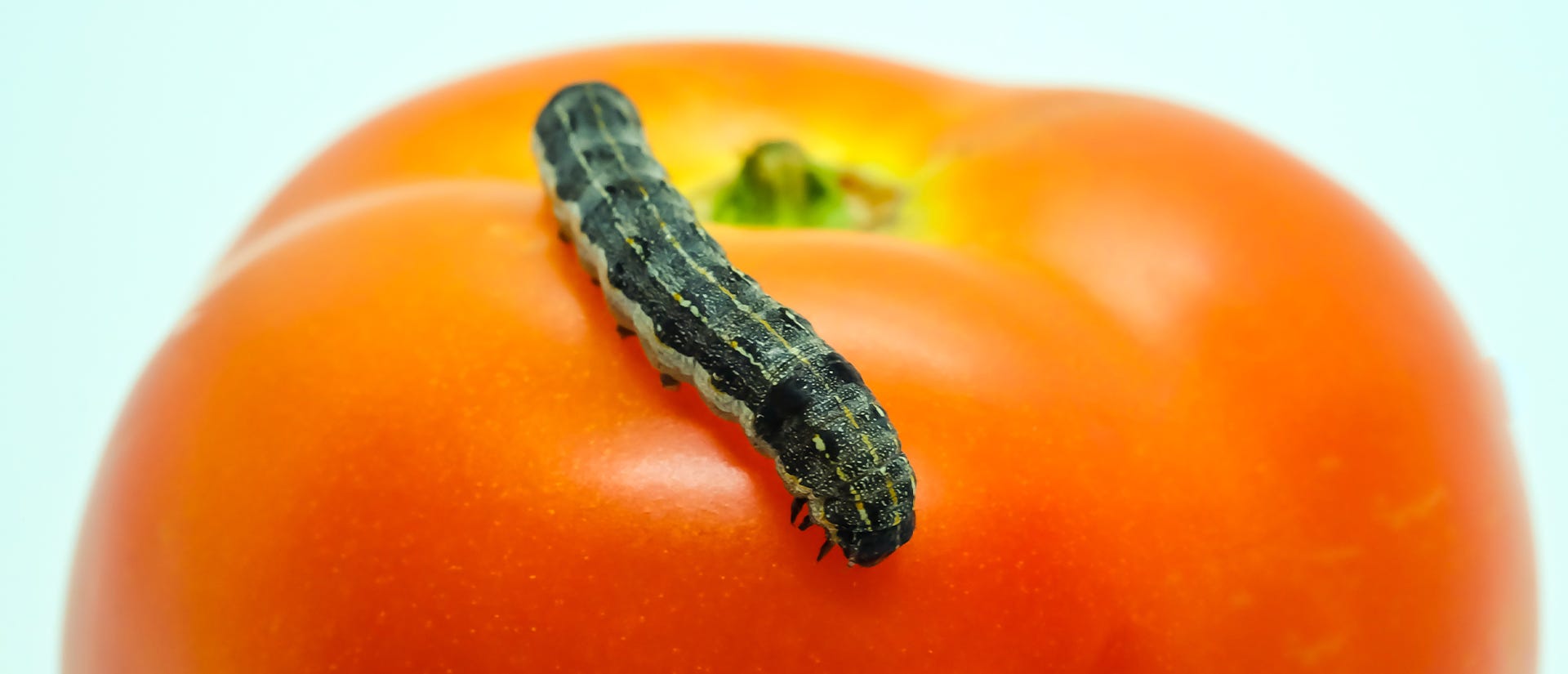
Cutworms
- What they are: Cutworms feed at night on seedlings. They “cut” or eat through the stem at soil level or an inch or less above the soil. Cutworms aren’t exactly worms — they are the larvae of certain moths. They only emerge at night and can be difficult to spot. Cutworms kill tomato plants by snipping them right in half.
- What to do about them: Prevent cutworm damage by making a paper collar that fits around your seedlings. Just take newspaper or cardboard and fold it into an inch-wide strip. Use tape to make a collar around the plant, leaving about two to three inches around the stem. Remove the collar once the plant has several sets of leaves. You can also cut the bottom off of a paper cup and slide the open-bottom cup over the seedling to prevent cutworm damage.
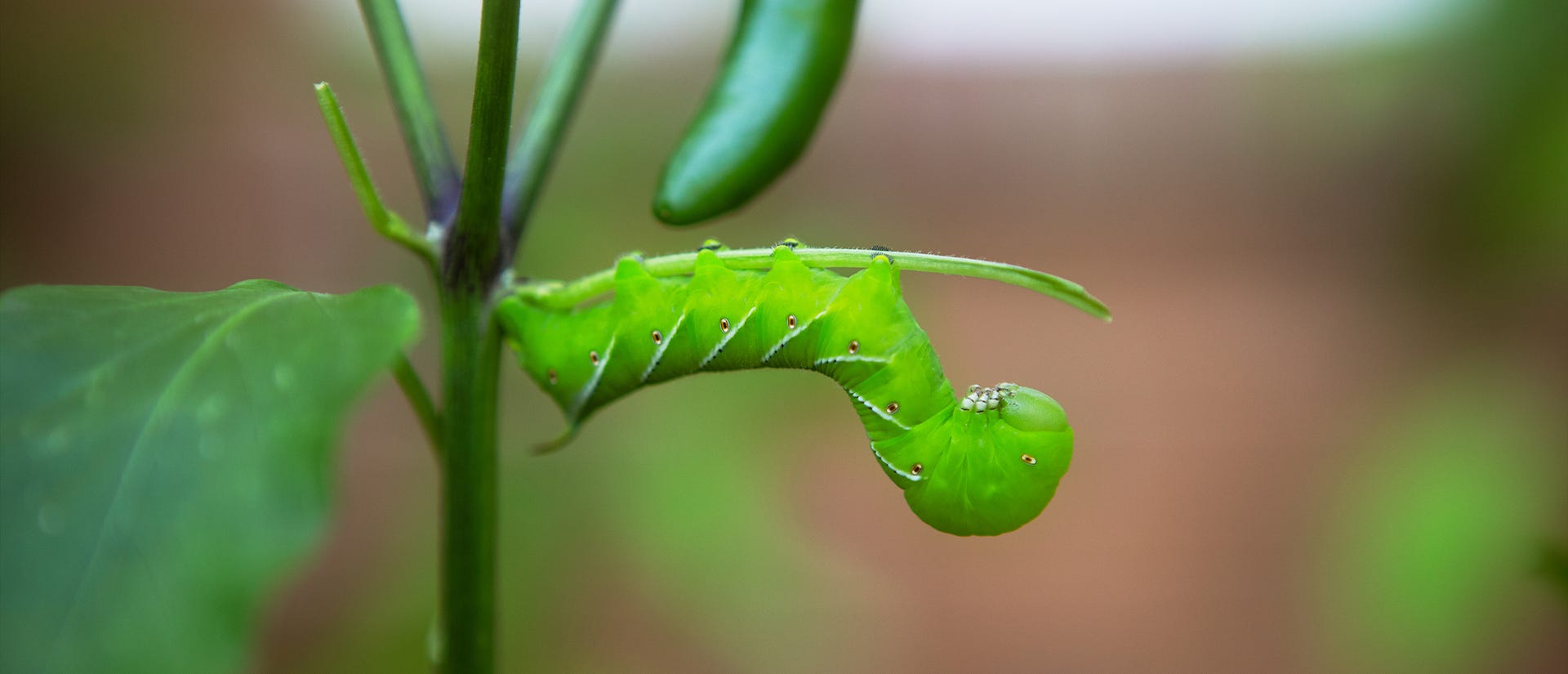
Hornworms
- What they are: Tomato or tobacco hornworms can decimate mature tomato plants in one night. These crafty insects are large green worms about two to three inches long with tiny horns on their head and ridged bodies. Hornworms are perfectly camouflaged, so they look exactly like a tomato stem or branch, making them difficult to spot. They emerge at night, eat all the leaves off the plant and move on to the next section or plant.
- What to do about them: Nature provides the best control for tomato hornworm in the form of a parasitic wasp that lays her eggs on the body of the hornworm. As the wasp’s larvae hatch, they eat into the living worm and eventually kill it. Natural methods to control tomato hornworms include planting marigolds around tomatoes. The strong marigold scent repels them naturally. Safer® Brand Caterpillar Killer II Concentrate uses a naturally occurring fungus to quell hornworms without harming earthworms. You can also use an insect-killing spray.
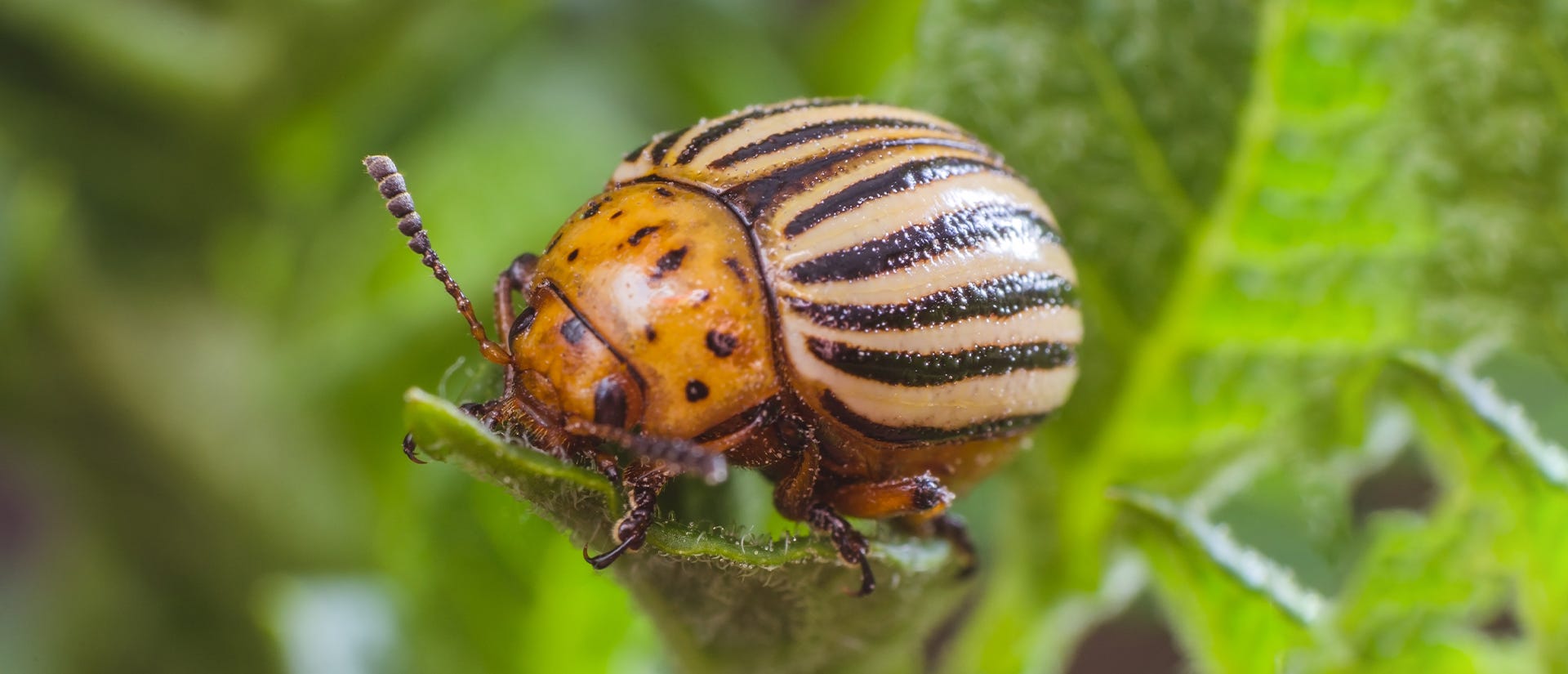
Colorado Potato Beetle
- What they are: Colorado potato beetles are native to the United States. They love plants in the nightshade family, especially potatoes. If they can’t find potatoes, however, they will gravitate towards tomatoes, eggplant and other nightshade family vegetables. The beetles are about the size of dimes, with yellow-and-black striped wings. The adults use their mouthparts to chew holes in the leaves of tomato plants. Females lay clusters of bright gold or yellow eggs underneath the leaves. When the larvae hatch, they spread out among the tomato leaves, easily eating their way through the entire plant. Larvae are red to dark pink with black spots and frequently hide under the leaves during the day.
- What to do about them: Use a pesticide with pyrethrins to spray on your tomato plants. This method works best in early spring before the larvae mature.
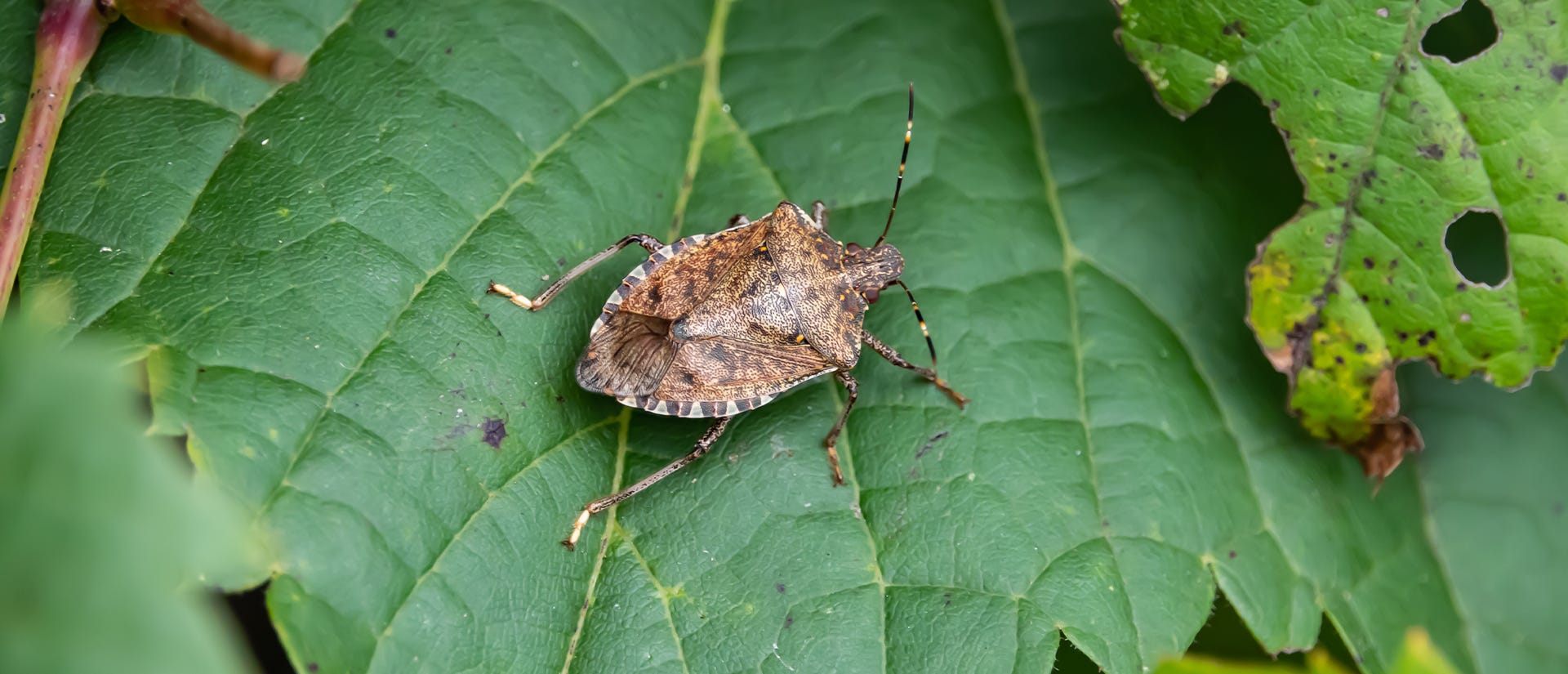
Stink Bugs
- What they are: The brown marmorated stink bug isn’t only an annoyance inside the home. These insects also use their needle-like mouthparts to suck the juice right out of your tomatoes. They can be spotted with the naked eye on your tomatoes, or you can see their damage in the yellow, uneven spots that appear on the ripening tomatoes. When you slice into a yellow-spotted tomato, white sections appear under the yellow spots, which distinguish stink bug damage from fungal or viral problems.
- What to do about them: Use a spray that kills a variety of insects in all stages of life such as Safer® Brand End All® Insect Killer. Apply at the first signs of insect damage, so your plants can continue to grow undisturbed.
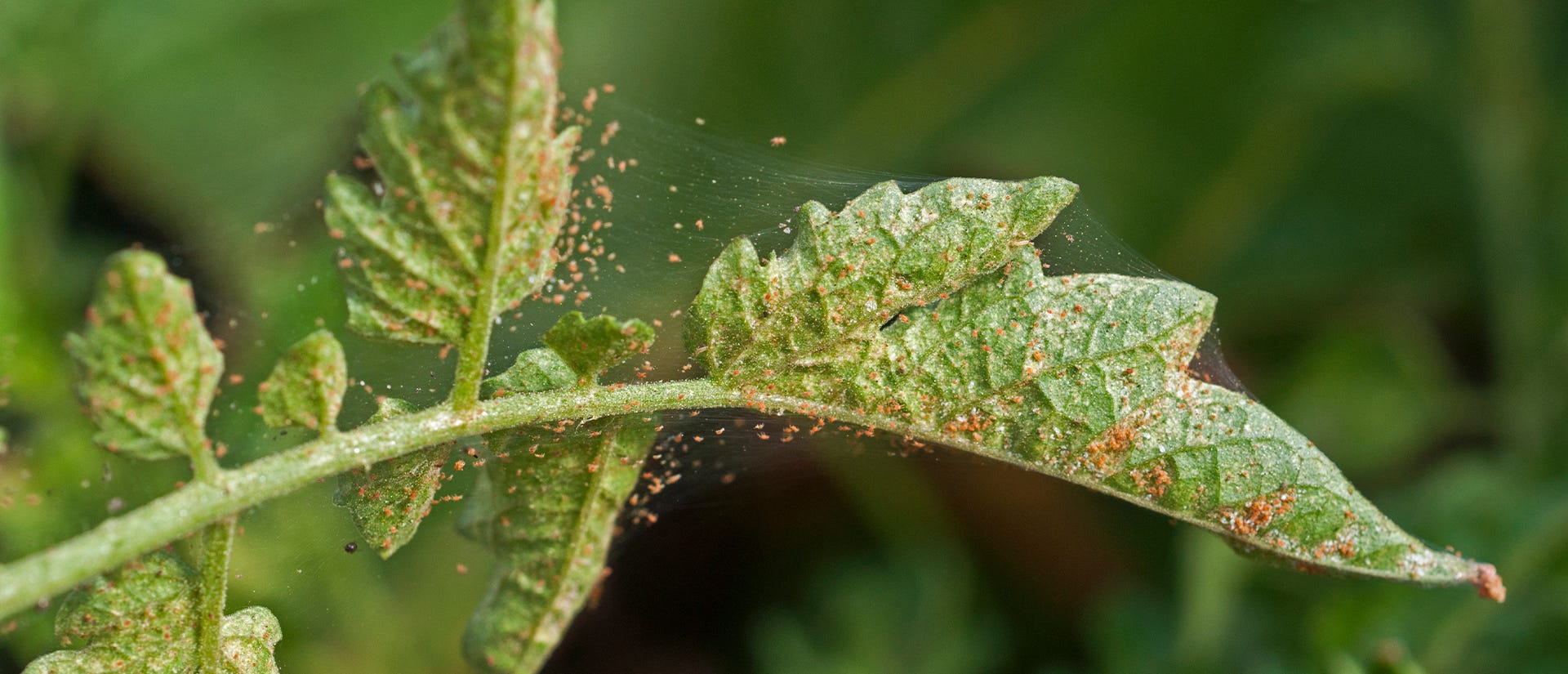
Spider Mites
- What they are: Spider mites are difficult to see because they’re so tiny, but you can clearly see the damage they leave behind. Mites scuttle along the stems and leaves, piercing the leaves to feed on the juices. Eventually, tomato leaves look stippled and bronzed, with damage to the plant’s leaf structure.
- What to do about them: The best method for treating spider mites on tomato plants is to use a neem oil spray. Another option is insecticidal soap, which also offers a treatment for spider mites.
Not Just Bugs: Bird Problems
One final tomato problem is often mistaken for insect damage: birds. Some birds, especially crows, love to eat ripening fruit, and tomatoes are technically a fruit. Crows peck with their large, sharp beaks at the ripening tomatoes, ripping open gashes and eating partial segments from various fruits. Other birds and even squirrels may also be at work if you find tomatoes that look like they have bites taken out of them.
The best control for bird problems is a net. A large fruit tree net, available at your local home or garden store, can be draped over the plants. The net is an effective deterrent to birds and usually a good deterrent for squirrels, too.
Tell Us About Your Tomato Problems
Join the Safer® Brand Community on Facebook, where we want to see the pictures of your tomato and garden problems. When you upload a photo or ask us a gardening question, we'll get on the case and offer suggestions for your next steps. Also, be sure to subscribe to the Safer® Brand E-Newsletter – signing up gives you links to helpful articles like this one.



